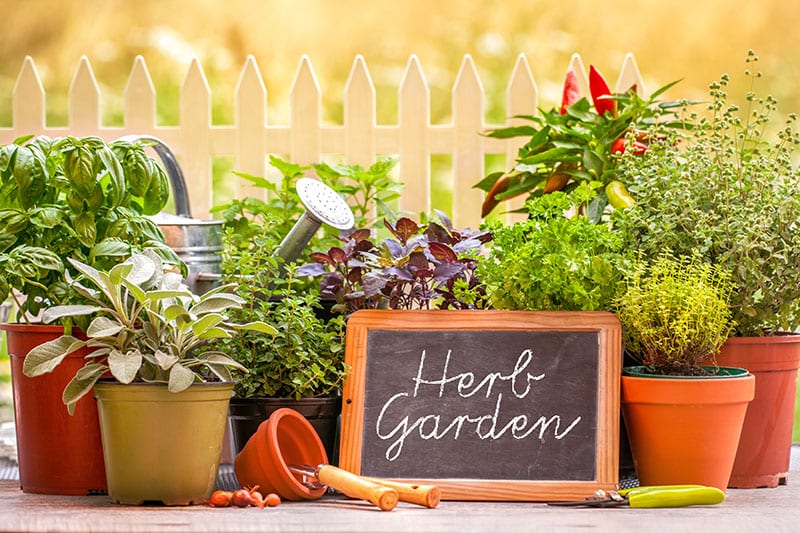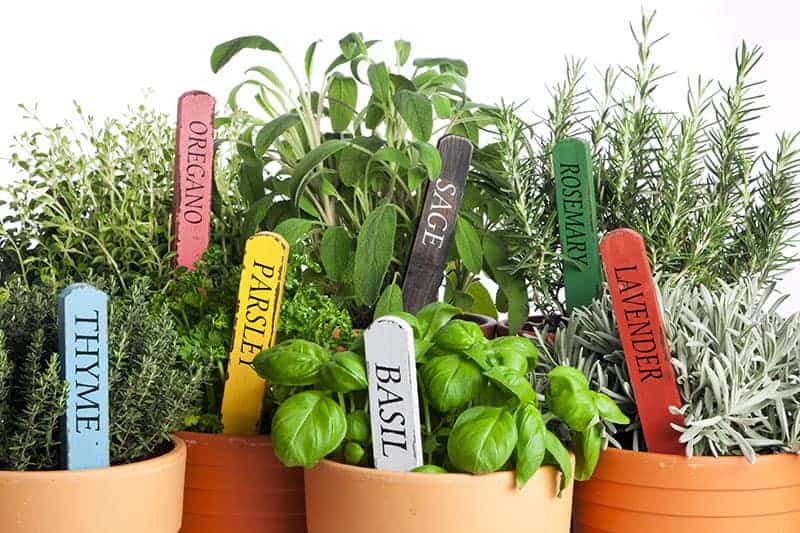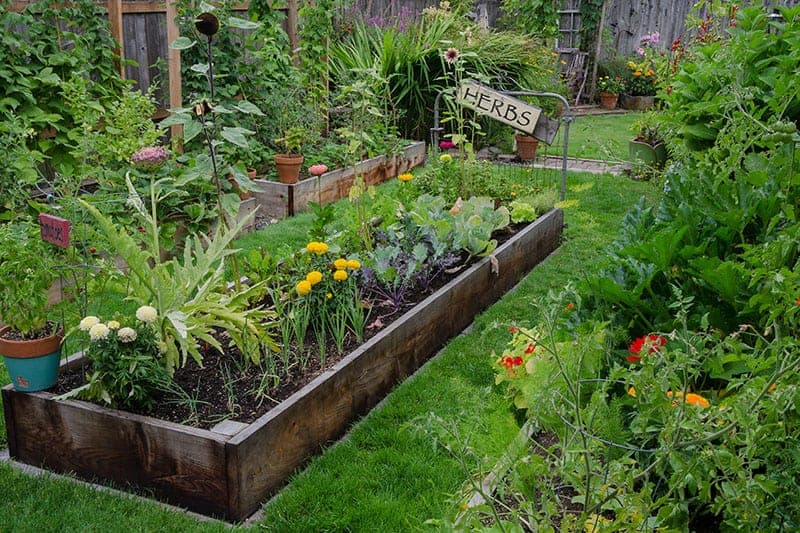
As a gardener, you know how important it is to have fresh herbs on hand. You can’t just run down to your local grocery store for them when the need arises! This blog post will give you some ideas on what types of herb gardens work best in different situations. If you’re looking for an easy garden that doesn’t require much maintenance, try planting your herbs in pots with shallow soil and lots of sun exposure. Herbs like basil and thyme do well in this type of environment and they’ll grow fast too!
Herbs are a delicious and versatile ingredient that can be used in cooking or to make tea. They also have amazing health benefits, which is just one of the reasons why more people are starting their own herb gardens! With this blog post you’ll get some ideas on how to start your own herb garden. Whether it’s indoors or outside, there’s an idea for everyone! We hope you enjoy reading about these new gardening trends.
There are a plethora of herb garden ideas you can choose from that will literally spice up your life! Fresh herbs are the ultimate when it comes to cooking and many people now a days want them. What better way to enjoy fresh herbs in your kitchen than ones that are just minutes old. Herb gardens, whether yours is indoors or outdoors, are a great way to begin gardening.
Herb Potting

Potted herbs are easy to grow from cuttings or seeds, indoors or outdoors. Start with a well draining soil. Another option is starting out with self-sustainable potting mix that has been sterilized with heat. The majority of these mixes will contain peat moss. Water often until the plants become established, then reduce water to intensify the flavors. Perennial potted herbs may need an occasional root pruning to keep the plant from getting too root bound.
Fertilize once a week with a balanced liquid fertilizer. Incorporating a granular fertilizer at planting will help. Too much fertilizer can lessen the flavor by increasing the shoot mass faster than oils develop in the plant.
Raised Herb Garden Ideas

Building a raised bed for your herb garden can be as simple or as extravagant as you want it to be. Raised herb garden ideas are many and varied. This blog post will explore some of the different ways you can create a raised herb garden, as well as how to care for them. It’s time to get your gardening gloves on!
More Herb Garden Ideas
There is no deep dark secrets when it comes to growing herbs. In fact herbs are really very easy to grow and you don’t need a large space to grow them in either. Most herbs can be grown in an area no bigger than a window box. Actually a window box would be an ideal place to grow a kitchen herb garden. There is enough room to grow parsley, basil, sage, or cilantro and it can all be in a compact container just outside the kitchen door. Combine herbs with a grape vine.
Many herbs can even be grown on the window sill of a sunny window in the house. The trick is to keep the herbs picked and to start new ones before the plants start to get too woody. Basil is an excellent window plant. When growing herbs inside or out remember two things the first is herbs do not like a lot of fertilizer and most herbs like moist soil but it needs to dry quickly wet soil will do most herbs in.
How about a strawberry jar herb garden Plant the top with a tall herb such as dill and then fill in the side with creeping plants like oregano, creeping thyme, or creeping rosemary. They will grow out the sides and hang down. just remember to keep the creeping plants trimmed to keep producing new leaves. You may substitute the plant in the top with something else such as sage if you like.
When planting herbs such as cilantro and basil it is good to do succession plantings maybe about 3 weeks apart so that you will have fresh leaves throughout the growing season. Cilantro and basil will go to seed quickly if not picked often and the flowers removed.
The main thing most herbs have in common is that they do not like wet feet and really do not need fertilizer as I mentioned earlier. Fertilizer will change the growth habits of the herbs and effect it’s strength and flavor. Good soil will provide all the nutrients necessary to grow a productive herb garden. Also be careful what you plant as some herbs can become rather aggressive and take over the whole area chocking out everything else. Mint is a perfect example. Mint is very invasive so if you want to grow it I suggest that you grow mint in a container and never in the ground.
A good herb garden will pay big dividends in as your family and friends will enjoy the great taste coming out of your kitchen. You will have the satisfaction of knowing you are using fresh homegrown herbs to feed them.
Herb Garden Design Ideas
Your herb garden should be functional and attractive. If you visit other people’s gardens, it should help you with your own herb garden designs. There are several important things to decide before you plant your first herb.
Research the plants you are thinking of planting. This will help you understand what types of pests you may be attracting to your garden. Each plant’s susceptibility to stagnation and decay when it is transplanted should be another concern.
You must determine what you hope to accomplish with your design. Do you want herbs primarily for medicinal reasons, or are you planting them for seasonings in your food? You can grow herbs of both types, but you will need to plan your garden design accordingly.
How much produce do you need to harvest from the garden? Is the beauty of the garden more important than the actual produce it yields? The answers to these questions are determined by your interests, and you should design your garden with these answers in mind rather than simply duplicating another garden design you have seen.
The herb gardens of centuries past were designed for the necessary functions of life. The garden yielded plants for medicines, seasonings, and dyes. These gardens were sometimes community gardens, and had to cater to several families. Those designs might be different than yours, especially if you just want the garden for the blooms and fragrances.
The amount of space you have to dedicate to the garden will have an effect on the design. If you have plenty of space, you may choose to have every conceivable type herb you can find. However, if space is limited, the garden may be limited to a handful of varieties. The wonderful thing about herbs is the limited number of plants you will typically need for any one item.
How will your garden relate to other landscape features in your yard? Can you plant your herbs in partial shade due to existing trees and plants? What existing landscape features, if any, are you willing to change to accommodate your new garden? Will some of the plants you want to use be a stark contrast to plants that are already there? Are some herbs incompatible with your existing plants?
Where you plant may be dictated in part by the herbs you have chosen. Although some herbs can be grown in shady areas, some require full sun. Some herbs bush into plants and pretty much stay where you put them, while others shoot out runners and want to go everywhere. Keep in mind how the garden will change after you’ve planted it. Decide what changes you are willing to allow.
Don’t be afraid to alter the garden after you plant it. After your original plan is implemented, things may transpire later that make that plan obsolete, or at least not in your best interests. You can relocate plants or have them removed if your interests change.
Freely use your imagination when designing your herb garden. There is no right or wrong place to put your herbs, as long as they get enough water, required sunlight, and proper drainage. Your herb garden designs should be your own and not mandated by the wants and needs of someone else.
